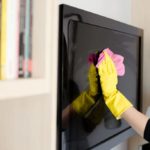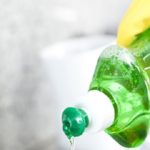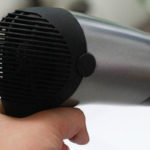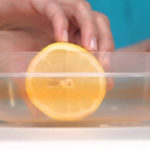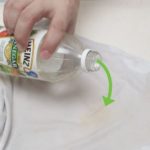After a period of use, bathroom glass walls (cabin) often become cloudy, covered with calcium deposits, or fish scales, which is very unsightly. So, what are the causes of yellowing, calcium deposits on the bathroom glass? How to fix it?
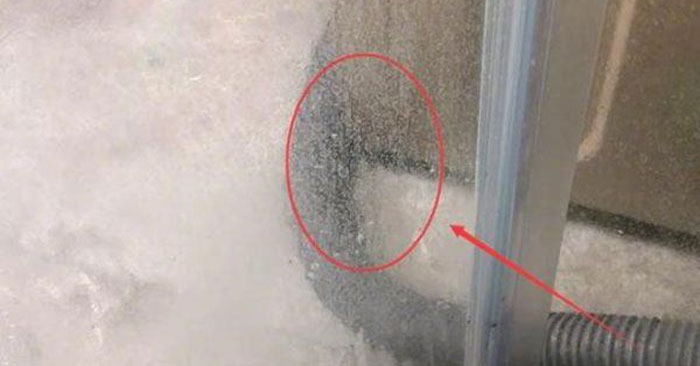
Causes of yellowing, calcium deposits on bathroom glass
– During the use of the bathroom, shower gel, bath soap will splash onto the glass without regular cleaning, wiping, causing the glass to oxidize, deposit and become cloudy.
– When using hot water for bathing, water vapor condenses quickly on the glass, leaving deposits (due to the precipitation of Mg, Ca).
– Poor quality glass is very prone to cloudiness, yellowing, and looks very unsightly after a short period of use.
– Failure to clean and maintain the glass properly to keep it transparent and durable.
Instructions for cleaning bathroom glass
1. Use vinegar
The main ingredient of vinegar is acetic acid solution, which reacts with Calcium, Magnesium deposits, so it has the ability to clean long-standing stains and can remove some stains, haze on the glass. To use vinegar to remove calcium deposits on glass, you can spray the diluted vinegar solution on the areas that need to be cleaned, then use a cloth to wipe and rinse with clean water.
2. Use baking soda
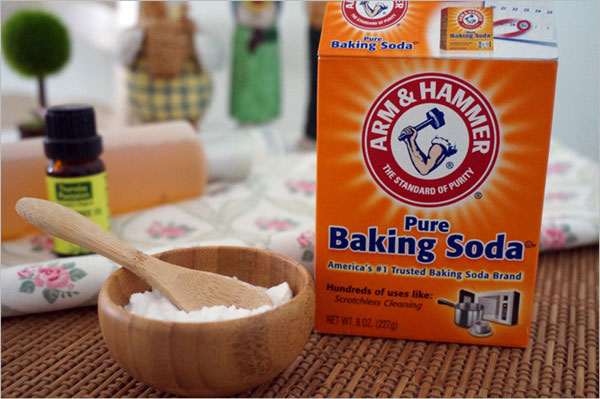
Baking soda will help you clean the new oxidized stains or newly accumulated calcium deposits on the bathroom glass walls. However, for long-standing, dense dirt, it is difficult to clean with this method. How to do: Use a mixture of baking soda and vinegar or lemon to rub on the dirty glass, then use a soft brush to scrub and rinse thoroughly with water.
3. Remove calcium deposits on glass with toothpaste
You can use toothpaste to remove newly appearing Calcium or yellow stains. Apply toothpaste directly to the area that needs to be cleaned, leave it for about 5 – 10 minutes. Then, use a soft brush to scrub and rinse with water, the bathroom glass will be clean and shiny like new.
4. Use a mixture of lemon and salt
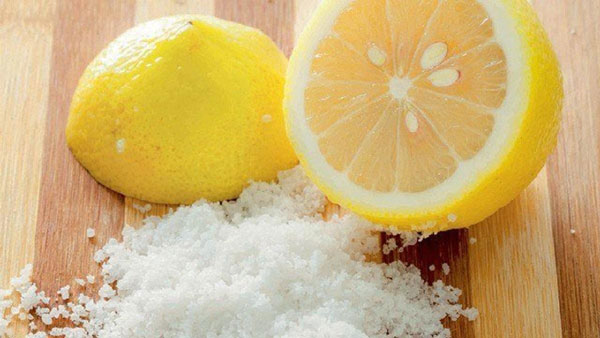
You can use two ingredients that are easy to find in the kitchen, which are lemon juice and salt, to effectively and easily remove calcium deposits on the glass. Prepare a solution of salt and lemon juice in a ratio of 2:1, use a brush or a cloth soaked in the solution and vigorously scrub the areas with deposits on the glass wall. Then, rinse the glass surface with clean water to remove the stubborn calcium deposits.
5. Use specialized solutions
If you have tried all 4 methods but the stubborn stains still remain, you can use specialized cleaning agents to remove calcium deposits on the bathroom glass. However, there are many different types of cleaning agents on the market, you should choose products made from natural extracts to ensure the health safety of the whole family.
Proper use of bathroom cabins will help prolong their lifespan, make them cleaner, and less prone to dirt. So when using, you should pay attention to:
– Choose high-quality glass with a reputation, warranty, maintenance over time.
– You can stick decals, stick glass or spray a little waterproofing solution on the glass before use to prevent water from sticking to the glass.
– If shampoo or shower gel accidentally sticks to the glass during bathing, clean the glass immediately to prevent the formation of future dirt that is harder to clean.
– Clean the glass by spraying water on the glass after cleaning. Then use a squeegee to wipe off the water or use a dry cloth to wipe.
According to An Nhiên – Vietnamnet

























